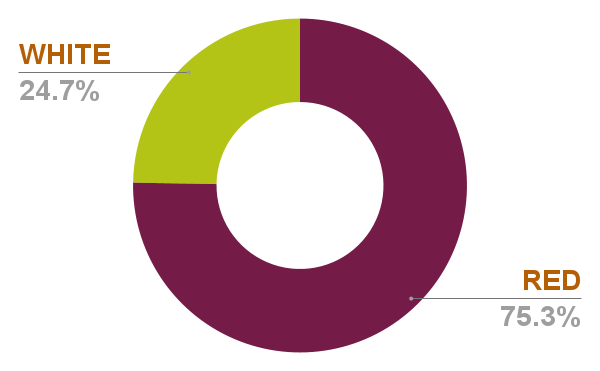By the numbers
-
6AVAs
-
40Wineries
-
1.27%Total Plantings
-
5,730Acreage Under Vine (Acres)
-
15,769.2Crush (Tons)
-
6AVAs
-
40Wineries
-
1.27%Total Plantings
-
2,319Acreage Under Vine (Hectares)
-
8,941,136Crush (Liters)

Overview
The San Francisco Bay AVA unites several smaller AVAs under one umbrella. It also gives AVA status to many vineyards that lie outside any AVA other than Central Coast. And it provides a widely recognized name, which helps with marketing and sales of the wines beyond the region itself.
Five counties lie entirely within the AVA: Alameda, Contra Costa, San Francisco, San Mateo, and Santa Clara. Parts of three other counties are included: San Benito, Santa Cruz, and Solano. All but two of these counties (San Benito and Santa Cruz) have shoreline on the San Francisco Bay. But, at the request of its winegrowers, the Santa Cruz Mountains AVA is neither included in the San Francisco Bay AVA, nor in the Central Coast AVA.
Due to its size and the complex nature of its geography, the San Francisco Bay AVA includes growing areas with disparate climates, soils, and topographies. Like the Central Coast AVA, it designates a place of origin, but not a particular style of wine. For example, there are cool-to-moderate climate areas with steeply sloping terrain (adjacent to the Santa Cruz Mountains) and hot, flat growing areas, such as those in eastern Contra Costa County. The diverse soil types include, but aren’t limited to, gravel, alluvial loam, deep sand, and poorly drained clay.
While there is considerable variation from one part of the San Francisco Bay AVA to another, the majority of its wines come from a fairly homogenous terroir, which is because most of the planted acres are in the Livermore Valley AVA.
The dominant geographical feature of the San Francisco Bay AVA is, of course, San Francisco Bay. It’s actually three large bays (San Francisco, San Pablo, and Suisun) and a number of small bays which are interconnected. These bays are fed by two very large rivers, the Sacramento and the San Joaquin, along with many smaller rivers, creeks, and canals.
The greater San Francisco Bay is massive. Stockton, one of California’s largest deep-water ports, lies on the bay, but it’s more than 70 nautical miles (130 nautical km) from the ocean. If one includes the Sacramento-San Joaquin River Delta, the bay’s surface spans more than 1,600 square miles (4,144 km2).
Consequently, San Francisco Bay contributes greatly to the region’s climate. That influence unifies the varied growing regions the San Francisco Bay AVA encompasses. Throughout the year, their temperatures are moderated by the bay. Many experience cold wind sweeping across it from the Pacific and fog that cooling air creates.

